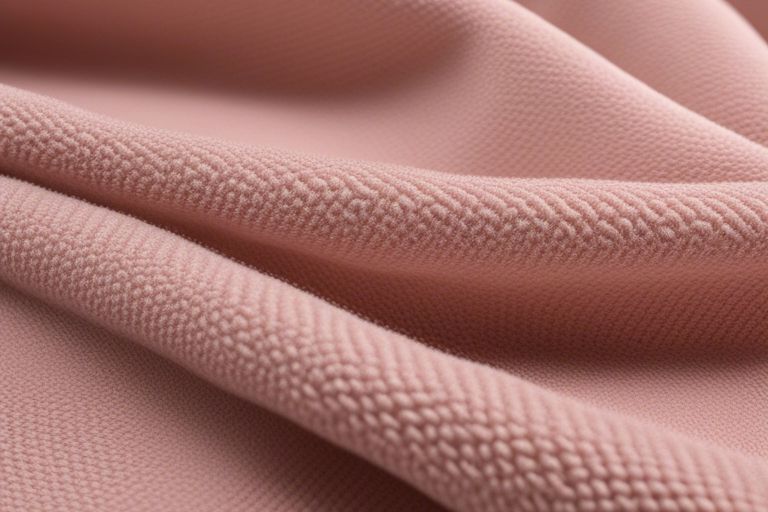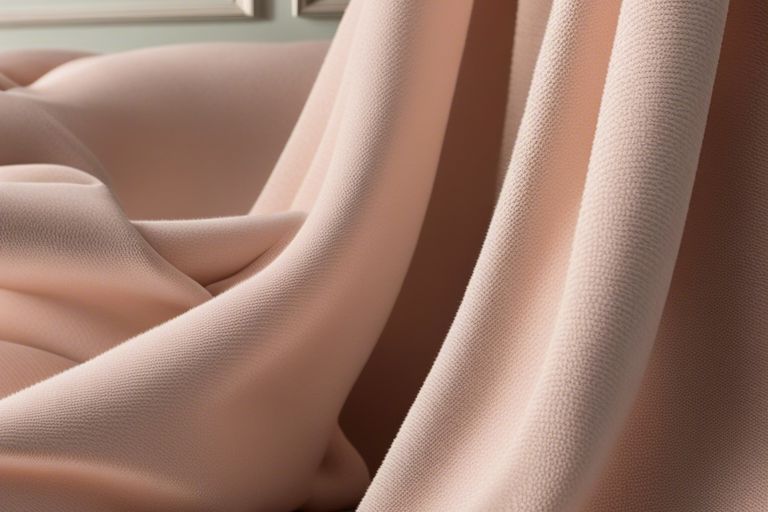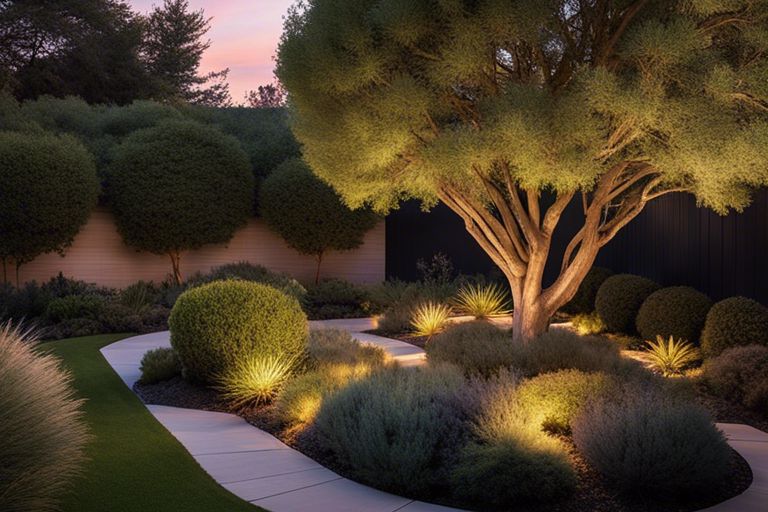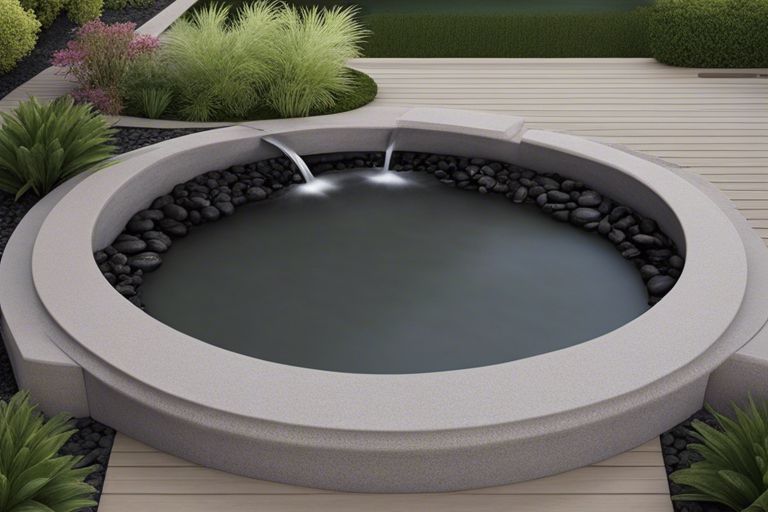Boucle fabric is a beloved choice in the world of textiles, known for its unique looped or knotted surface that creates a luxurious and textured appearance. This comprehensive guide will take you through the ins and outs of boucle fabric, from its origins and characteristics to tips on care and styling. Whether you’re a seasoned fashion enthusiast or new to the fabric scene, this guide will equip you with all the vital knowledge to incorporate this versatile material into your wardrobe effortlessly.
Key Takeaways:
- Bouclé fabric is characterized by its looped or curled yarns: Bouclé fabric is easily recognizable by its unique texture created by looped or curled yarns, giving it a distinctive look and feel.
- Bouclé is versatile and can be used for various items: Bouclé fabric can be used for a wide range of items including clothing like blazers, coats, and skirts, as well as for home decor like pillows and upholstery.
- Best care practices for Bouclé fabric: Due to its unique texture, Bouclé fabric requires special care when cleaning. It is recommended to spot clean or dry clean Bouclé items to maintain their quality and texture.
Understanding Boucle Fabric
What is Boucle Fabric?
Boucle fabric is a unique textured textile that is easily recognizable by its looped or curled surface. This fabric is often made from a combination of different fibers, such as wool, cotton, silk, or synthetic materials, which are twisted together to create its signature look. Boucle fabric is commonly used in high-end fashion and home decor due to its luxurious appearance and soft feel.
History of Boucle Fabric
You may be surprised to learn that boucle fabric dates back to the 1950s when French fashion designer Coco Chanel popularized the use of this material in her iconic suits. Since then, boucle fabric has become synonymous with sophistication and elegance, making it a staple in designer collections around the world.
To understand the enduring appeal of boucle fabric, it’s vital to recognize its key characteristics that set it apart from other textiles.
Characteristics of Boucle Fabric
If you’re searching for a fabric that offers both style and comfort, boucle fabric is an ideal choice. Known for its softness and warmth, boucle fabric is perfect for creating cozy garments and chic home accessories. Additionally, the looped texture of boucle fabric adds depth and dimension to any design, making it a versatile option for various projects.
Types of Boucle Fabric
Assuming you are new to the world of boucle fabric, understanding the different types available can be a great starting point. There are several variations of boucle fabric, each offering unique textures and characteristics that make them suitable for various types of projects. Perceiving the differences between them can help you choose the perfect boucle fabric for your next sewing or crafting endeavor.
Looped Boucle Fabric
Some of the most common types of looped boucle fabric have a distinctive loopy appearance, created by looping the yarns as they are woven or knit. This type of boucle fabric often has a cozy, textured feel, making it ideal for creating warm and stylish garments such as jackets, sweaters, and blankets.
Cut Boucle Fabric
With cut boucle fabric, the loops in the fabric are cut during the finishing process, creating a plush and luxurious texture. This type of boucle fabric is commonly used in high-end fashion pieces and upholstery due to its elegant appearance and soft feel.
Boucle fabric with a cut pile has a distinct look that sets it apart from other types of boucle. The cut loops create a smooth, velvety texture that is perfect for creating sophisticated garments and home decor items with a touch of luxury.
Chenille Boucle Fabric
For chenille boucle fabric, chenille yarns are used to create a soft and fuzzy texture that is both cozy and stylish. This type of boucle fabric is popular for making comfortable clothing and accessories like scarves, hats, and throw blankets.
Fabric made with chenille yarns has a unique appearance that adds depth and interest to any project. The plush texture of chenille boucle fabric makes it a favorite choice for those looking for a luxurious feel in their creations.
Other Variations of Boucle Fabric
Variations in boucle fabric can include blends with other fibers such as silk, cotton, or synthetic materials. These blends offer different textures and characteristics, adding versatility to the fabric. It is important to consider the composition of the boucle fabric when choosing a type for your project, as each blend can affect the overall look and feel of the final product.
Factors to Consider When Working with Boucle Fabric
Unlike other fabrics, working with boucle fabric requires careful consideration of several factors to ensure a successful project. From thread count and density to fabric weight and drape, each element plays a crucial role in the overall outcome of your creation. Recognizing these key factors will help you navigate the unique properties of boucle fabric and achieve the desired results.
Thread Count and Density
Boucle fabric is known for its distinctive looped appearance, created by the irregularity in the thread count and density of the fabric. Higher thread counts and densities result in a tighter weave, while lower counts produce a more textured and airy fabric. When working with boucle, consider the impact of thread count and density on the overall look and feel of your project, as they can greatly influence the final outcome.
Fabric Weight and Drape
There’s a delicate balance between fabric weight and drape when working with boucle. The weight of the fabric will determine how it hangs and moves, while the drape will affect the overall silhouette of your garment or home decor item. It’s necessary to choose a boucle fabric with the right weight and drape for your specific project to ensure a harmonious and flattering result.
The weight of boucle fabric can range from lightweight and fluid to heavy and structured, offering a wide range of options for different applications. Consider the intended use of your project when selecting the weight and drape of your boucle fabric to achieve the best possible result.
Color and Pattern Options
On top of its unique texture, boucle fabric also comes in a variety of color and pattern options to suit different tastes and styles. Whether you prefer classic neutrals, bold hues, or intricate patterns, there’s a boucle fabric to match your vision. Consider the color and pattern of the fabric carefully to enhance the overall aesthetic of your project and make a statement with your creation.
Plus, boucle fabric can be easily mixed and matched with other fabrics to create dynamic and visually appealing designs. Experiment with different color combinations and patterns to achieve a truly unique and personalized look for your project.
Care and Maintenance Requirements
Assuming proper care and maintenance is necessary to preserve the quality and longevity of your boucle fabric creations. From thread fraying and pilling to color fading and shrinkage, boucle fabric requires special attention to keep it looking its best. Follow the manufacturer’s recommendations for cleaning and storing your boucle fabric items to ensure they remain in pristine condition for years to come.
Pros and Cons of Using Boucle Fabric
Not all fabrics are created equal, and boucle fabric is no exception. To help you decide whether boucle is the right choice for your next project, it’s necessary to weigh the pros and cons of using this unique material.
| Advantages | Disadvantages |
| Textured, luxurious look | Prone to snagging |
| Soft and comfortable to wear | May require special care during cleaning |
| Great for adding depth and dimension to garments | Can be challenging to work with for beginners |
| Available in a variety of colors and patterns | May stretch or shrink if not handled properly |
Advantages of Boucle Fabric
Assuming you choose to work with boucle fabric, you will find it offers a textured, luxurious look that adds sophistication to any garment. Its soft and comfortable feel against the skin makes it a popular choice for clothing items that require both style and comfort.
Disadvantages of Boucle Fabric
On the flip side, boucle fabric can be prone to snagging, which can be frustrating for those looking to create long-lasting pieces. Additionally, the delicate nature of boucle fabric means it may require special care during cleaning to maintain its quality and appearance.
Advantages: Boucle fabric is great for adding depth and dimension to garments with its textured appearance. It is also available in a wide range of colors and patterns, allowing for versatile design possibilities.
Common Misconceptions About Boucle Fabric
You may have heard some misconceptions about boucle fabric, such as it being difficult to care for or style. In reality, with proper handling and care, boucle fabric can be a valuable addition to your fabric collection, offering both style and comfort in one.
Common Misconceptions: Despite its delicate nature, boucle fabric is a versatile material that can be used to create stunning pieces with the right techniques and understanding of its unique properties.
Tips for Working with Boucle Fabric
Now that you have your beautiful boucle fabric ready for your next sewing project, it’s important to keep a few tips in mind to ensure a successful outcome. Check out these useful pointers to help you work with boucle fabric like a pro:
- Choosing the Right Needle and Thread: For detailed information on selecting the appropriate needle and thread for working with boucle fabric, refer to A Comprehensive Guide to Boucle Fabric.
Choosing the Right Needle and Thread
Tips for selecting the correct needle and thread for boucle fabric can make a significant difference in your sewing experience. Using a ballpoint needle and polyester thread can help prevent snagging and ensure smooth stitching on this textured material.
Cutting and Preparing Boucle Fabric
Thread
With a fabric as delicate and unique as boucle, proper cutting and preparation are crucial steps in the sewing process. When working with boucle fabric, it’s important to use sharp fabric shears to prevent fraying and ensure clean edges. Take your time when cutting boucle fabric to avoid any unraveling or distortion of the textured yarns.
Sewing and Finishing Techniques
For
Regarding sewing and finishing boucle fabric, attention to detail is key. Pin the fabric pieces together carefully before sewing to prevent shifting during stitching. Consider using a walking foot attachment on your sewing machine to help feed the boucle fabric evenly and avoid stretching or puckering. For instance, pressing seams with a pressing cloth can help maintain the fabric’s texture and shape.
Troubleshooting Common Issues
Sewing
Plus

Step-by-Step Guide to Sewing with Boucle Fabric
Many sewers are drawn to the gorgeous texture and cozy feel of boucle fabric, but working with it can be a bit challenging if you’re not prepared. To help you navigate this beautiful material, here is a step-by-step guide to sewing with boucle fabric.
Preparing Your Pattern and Fabric
| Boucle Fabric | Pattern |
| 1. Before cutting your boucle fabric, be sure to pre-treat it according to the manufacturer’s instructions. This will prevent any unwanted shrinkage or distortion once your garment is sewn. | 1. When using a pattern with boucle fabric, consider using a simple design to let the fabric shine. Avoid intricate details that may get lost in the texture. |
| 2. Use a walking foot on your sewing machine to help feed the boucle fabric through evenly without stretching or distorting it. | 2. Make any necessary adjustments to the pattern, such as adding extra seam allowance to accommodate the fabric’s thickness. |
Cutting and Piecing Your Fabric
Fabric
Cutting and piecing your boucle fabric requires a bit of finesse. Take your time and use sharp scissors to ensure clean edges and prevent fraying. When pinning pieces together, use extra-long pins to secure the fabric without causing damage.
Sewing and Constructing Your Project
Little
Take it slow when sewing and constructing your boucle project. The fabric can be bulky, so press seams carefully to reduce bulk and ensure a professional finish. Consider hand-stitching hems for a polished look.
Finishing and Embellishing Your Project
Pattern
Finishing and embellishing your boucle project can really elevate the final look. Consider adding special touches like decorative trims or topstitching to showcase the unique texture of the fabric. And don’t forget to give your garment a final press to bring out the boucle’s full potential.
Preparing Your Boucle Fabric for Sewing
Before you start sewing with boucle fabric, make sure to prepare your work area. Keep your fabric flat and smooth to prevent any snags or pulls during the sewing process. Additionally, have a lint roller handy to clean up any stray fibers that may shed from the fabric.
Final Words
Now that you have learned all about bouclé fabric, from its origins and characteristics to its popular uses in fashion, home décor, and more, you are equipped with the knowledge to appreciate and incorporate this unique material into your own projects. Whether you are looking to create a cozy jacket, stylish throw pillows, or elegant upholstery, bouclé fabric offers endless possibilities for adding texture and depth to your designs.
Remember to consider the type of yarn, weave, and color when selecting bouclé fabric for your project, and be sure to follow care instructions to ensure your items maintain their beauty and durability. With its timeless appeal and versatility, bouclé fabric is a fantastic choice for anyone looking to create standout pieces that exude sophistication and style.
FAQ
Q: What is Boucle Fabric?
A: Boucle fabric is a type of material known for its looped or curled yarns that create a textured and bumpy surface. It is commonly used in making garments such as jackets, coats, and suits.
Q: How is Boucle Fabric Made?
A: Boucle fabric is typically made from a variety of fibers such as wool, cotton, silk, or a blend of these materials. The unique texture of boucle fabric is achieved through a specialized weaving process that creates loops or curls in the yarns.
Q: How Do I Care for Boucle Fabric?
A: To care for boucle fabric, it is recommended to dry clean only to preserve the texture and shape of the material. Avoid washing boucle fabric in a washing machine or exposing it to high heat, as this can cause the yarns to shrink or lose their texture.



